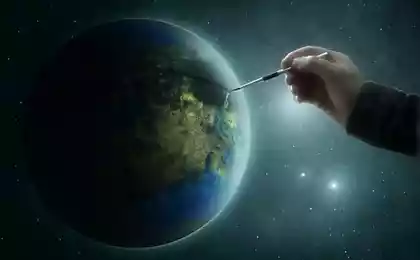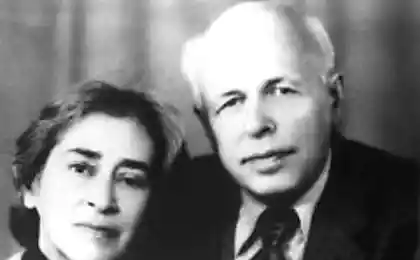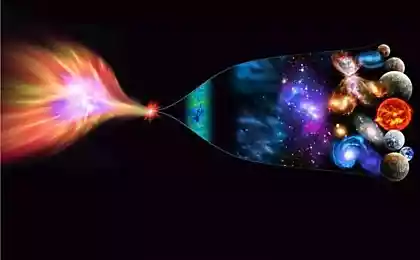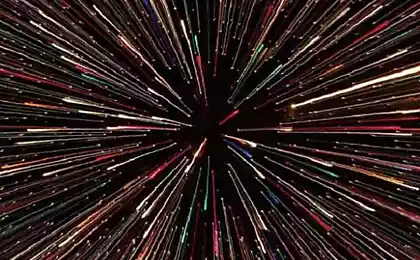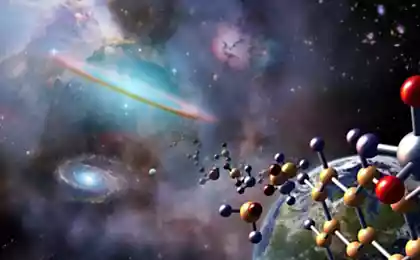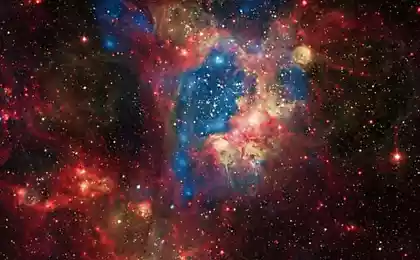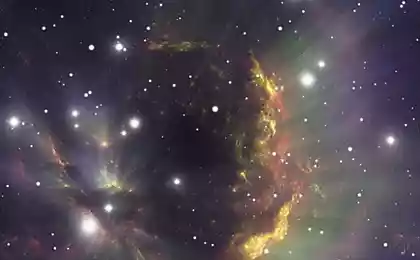687
Is there another version of You in a parallel universe
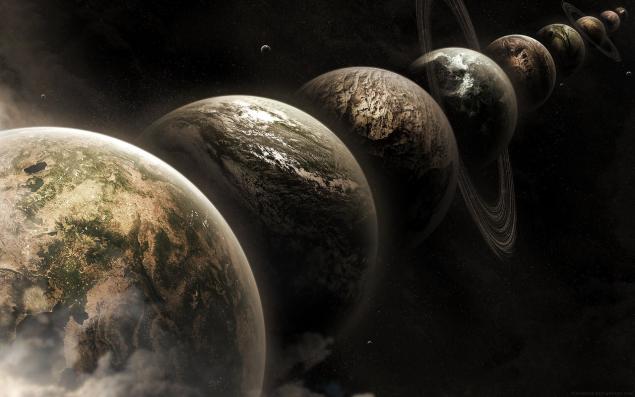
"Come on, there are other worlds than these," wrote Stephen king in "Dark tower". One of the most interesting topics for discussion is the fact that our reality — our universe as we perceive it — may not be the only version of events. Perhaps there are other Universes; perhaps they have their own versions where there are other events and taken other decisions — a kind of multiverse.
American astronomical community regularly discusses parallel worlds, fantastical or scientific aspects and meets annually. At the last meeting talking about parallel worlds kept Max Tegmark known astrophysicist.
The universe as seen by the most powerful telescopes (even in theory), huge, big and massive. Along with photons and neutrinos, it contains about 10^90 particles, crumpled and grouped together with the hundreds of billions or trillions of galaxies. In each of these galaxies, a trillion stars (average), and they are scattered in space in a sphere around 92 billion light-years in diameter, from our point of view.
But despite what intuition tells us, it all does not mean that we are in the center of a finite Universe. In fact, all evidence points entirely to the opposite.
The reason that the ultimate universe seems to us that we can not see beyond a certain distance, — not is that the universe is finite, but rather that in its current state the universe exists at a certain time. You should know that the universe is not constant in time and space, and evolved from a more homogeneous, hot and dense to a cold, inhomogeneous and blurred to the present time.

As a result, we have a rich universe, full of many generations of stars, sverhdorogim a residual background radiation, the receding of galaxies and defined the limits that restrict our vision. These limits are set by the distance which the light has passed since the Big Bang.
And this, as you know, does not mean that beyond the visible Universe there's nothing. We have every reason to believe, from both theoretical and empirical points of view that are outside the visible there are many, even infinitely many invisible.
Experimentally, we can measure several interesting quantities, including the spatial curvature of the Universe, its smoothness and homogeneity in temperature and density plans and its evolution over time.
We found that the universe is relatively flat and spatially relatively uniform in its volume that goes beyond the visible to us; perhaps our universe is part of another Universe very similar to ours, but stretchable in the hundreds of billions of light years in all directions what we do not see.

However, the theory is still interesting. We can extrapolate the Big Bang backwards and reached even to its extremely hot, dense, expanding state, and not even to an infinitely hot and dense condition, and, further still, to the very first moments of its existence — to the phase that preceded the Big Bang.
This is the phase period of cosmological inflation, describes a phase of the Universe where the Universe is filled with matter and radiation, the universe was filled with energy inherent to space itself: in a state that has led to the expansion of the Universe exponentially. That is, the universe has been expanding gradually along with slow over time and at two, four, six, eight times faster — the farther from the center, the more progression.
Because this expansion occurred not only exponentially, but very quickly, the "doubling" occurred with a frequency of 10^-35 seconds. That is, as once it was 10^-34 seconds, the universe was already 1000 times more than the original size; another 10^-33 seconds, the universe is 10^30 times more than the original size; by that time, how was 10^-32 seconds the universe was 10^300 times more than the original size and so on. The exponent is a powerful thing, not because quick, but because it is persistent.
It is obvious that the universe is expanding so we are here, inflation ended, the Big Bang took place. We can represent the inflation in the form of a ball, rolling along with gentle. While the ball is at the top of the hill he is heading, albeit slowly, inflation continues. When a ball rolls down into the valley, the inflation ends, the energy space is converted into matter and radiation; the inflationary state of the flows in the hot Big Bang.
Before we move on to what we know about inflation is to say that we know about her. Inflation is not similar to a ball rolling on a classical field, she's more of a wave propagating in time, like a quantum field.
This means that as time goes on, the more space is created in the inflation process, and in some regions, from the perspective of probability, inflation ends, while the other continues. The regions where inflation ends, experiencing the Big Bang and see the birth of the Universe, while the other regions continue to experience inflation.
As time progresses, because of the dynamics of the expansion, the regions where inflation ended, never collide and do not interact; the regions, in which inflation continues, pushing each other, interact. Here this is what we expect to see, based on the known laws of physics and observable events that exist in our Universe, which will tell us about inflation. Some things, however, we do not know what creates uncertainty and probability at the same time.
We don't know how long inflation lasted as long as not over and moved to the Big Bang. The universe may be slightly less than that observed, can be many orders of magnitude greater or even endless. We do not know whether the regions where inflation has ended are the same or quite different from ours. There is an assumption that there are (unknown) physical dynamics that lead to fundamental constants in the compliance — mass of particles, forces, fundamental interactions, dark energy — such as those in our region. But there is an assumption that in different regions over inflation can be quite different universes with different types of physics and constants. And if the universes are similar to each other from the point of view of physics, and the infinite number of these universes and many-worlds interpretation of quantum mechanics is absolutely true, does this mean that there are parallel universes in which everything develops similarly as in ours, except for one tiny quantum event?
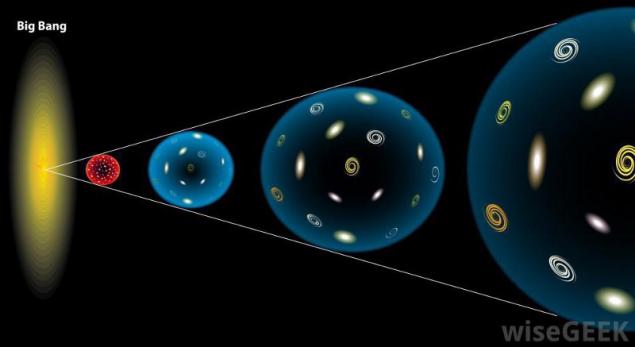
In short, can there be like our universe in which everything happened exactly the same, except for one tiny thing, which radically changed the life of your alter ego in another universe?
- Where you went to work abroad, and remained in the country?
- Where you beat up the robber, but he is not you?
- Where you refused the first kiss?
- Where the event that determined the life or death matter anyway?
However, there are many reservations to allow this to happen. First, inflation status should not continue, only 13.8 billion years in our Universe — and for an unlimited amount of time. Why?
If the universe expanded exponentially — not within the shortest fraction of a second, but during 13.8 billion years (4 x 10^17 seconds), we're talking about the giant space. That is, even if there are regions where inflation has ended, most of the Universe will represent the regions in which it continues.
Thus, we will deal with at least 10^10^50 universes that started with the initial conditions similar to our Universe. This is a huge number. And still there are numbers, and more. For example, if you take possible to describe the probability of particle interaction.

In each universe 10^90 particles, and we need that each of them had the same history of interactions for 13.8 billion years our universe to get an identical universe. For a universe with 10^90 particles with 10^10^50 possible variants of such a universe need to each this particle interacted with another over 13.8 billion years. The number that you see above, it's just 1000! (or (10^3)!), the factorial of 1000, which describes the number of possible permutations 1000 different particles at any given time. (10^3)! more than (10^1000), something around 10^2477.

But in the Universe of 1000 particles, 10^90. Every time two particles interact, may not be only one result, and the whole of the quantum range of results. It turns out there is a lot more than (10^90)! possible results of the interaction of particles in the Universe, and this number is many times more googolplexes insignificant number like 10^10^50.
In other words, the number of possible interactions of particles in any Universe grows to infinity much faster than the number of possible Universes due to inflation.
Even if we put aside such moments, what could be an infinite number of values for fundamental constants, particles and interactions, even if you postpone the problems of interpretation, they say, does many-worlds interpretation of our physical reality in principle, all boils down to the fact that the number of possible variants of development of growing so much faster than exponentially — that unless inflation does not continue indefinitely, parallel universes identical to ours, does not exist.

The theorem on the singularity tells us that, most likely, as the inflation could not last an infinite amount of time, and emerged as a distant but finite point in the past. There are many universes, perhaps with different laws, maybe not — but it's not enough to give us an alternative version of ourselves; the number of options grows too fast compared to the rate of occurrence of possible universes.
What does this mean for us?
This means that you have no choice, except in this Universe. Make decisions without regret: doing something, stick up for yourself, live to the fullest. There are no more universes with other versions of you and there is no future, in addition, for the sake of which you live.

Source: hi-news.ru









